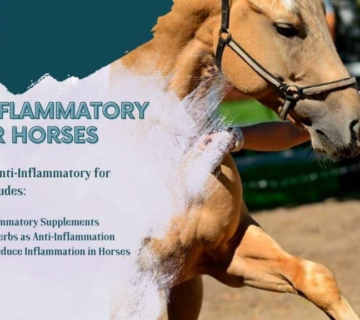Banamine: A Versatile Solution for Horses, Cattle, Goats, and Humans
At Abbey Veterinary Supply, we understand the importance of finding effective solutions to address various health concerns in animals and humans alike. One such versatile medication is Banamine, which offers a wide range of benefits for horses, cattle, goats, and even humans. In this comprehensive guide, we will explore the uses, dosage, and safety precautions associated with Banamine.
Banamine for Horses
Addressing Equine Pain and Inflammation
Horses are magnificent creatures, but they are also susceptible to certain health issues, including pain and inflammation. Banamine, an FDA-approved non-steroidal anti-inflammatory drug (NSAID), provides relief from these discomforts, allowing horses to recover and thrive.
Banamine can effectively alleviate pain associated with conditions such as colic, lameness, and injuries. By targeting the prostaglandin synthesis, Banamine inhibits the production of pain-inducing chemicals in the body, leading to reduced inflammation and improved comfort for horses.
Dosage and Administration Banamine
When administering Banamine to horses, it is crucial to follow proper dosage instructions. The recommended dose is 1.1 mg per pound of the horse’s body weight. This can be administered orally or by injection, as directed by a veterinarian.
It is essential to consult with a qualified veterinarian to determine the appropriate dosage and treatment duration based on the specific condition being treated. Veterinary guidance ensures the best outcomes for your equine companion.
Safety Precautions
While Banamine is generally safe for horses, it is vital to adhere to safety precautions. Long-term use of Banamine or exceeding the recommended dosage can lead to adverse effects, including gastric ulcers or kidney damage.
Additionally, Banamine should not be administered to horses with a history of gastrointestinal ulcers, liver or kidney disease, or those who are pregnant or lactating. It is always wise to consult with a veterinarian before initiating any treatment.
Banamine for Cattle
Managing Pain and Fever in Cattle
Cattle, like any other animal, can experience pain and fever due to various factors. Banamine serves as an effective solution to alleviate these symptoms in bovines, facilitating their well-being and recovery. Equioxx For Horses
By modulating prostaglandin synthesis, Banamine reduces inflammation and discomfort associated with conditions such as respiratory diseases, mastitis, or post-surgical pain in cattle. It aids in restoring their health and promoting productivity.
Dosage and Administration
For cattle, the recommended dosage of Banamine is 1.1 mg per pound of body weight. It is essential to administer the correct dosage, either orally or through injection, under the guidance of a veterinarian. The duration and frequency of treatment may vary depending on the specific condition. Banamine Injection Veterinary Use
Banamine for Goats
Easing Pain and Inflammation in Goats
Goats, despite their hardiness, can suffer from pain and inflammation caused by injuries, infections, or other health issues. Banamine proves to be a valuable tool in managing these conditions, allowing goats to heal and regain their vitality.
By inhibiting the synthesis of inflammatory mediators, Banamine helps reduce pain and swelling in goats. It promotes their comfort and aids in a faster recovery process.
Dosage and Administration Banamine
When administering Banamine to goats, it is crucial to consult with a veterinarian to determine the appropriate dosage based on the goat’s body weight and condition. The recommended dosage typically ranges from 0.5 to 1 mg per pound of body weight.
Banamine can be given orally or through injection, as directed by a qualified professional. Adhering to proper administration guidelines ensures optimal results and prevents potential complications. Tren for Sale
Banamine for Humans
A Promising Option for Pain Relief
Apart from its applications in veterinary medicine, Banamine has also shown promise in human medicine for managing pain and inflammation. However, it is important to note that Banamine for human use should only be administered under the guidance of a healthcare professional.
Banamine can be prescribed to humans for short-term pain relief, particularly in cases of post-operative pain, dental pain, or painful menstrual periods. It shares similar mechanisms of action with other NSAIDs, making it effective in reducing pain and swelling.
Dosage and Administration
The appropriate dosage of Banamine for humans should be determined by a medical professional based on the specific condition being treated. It is important to strictly adhere to the prescribed dosage and treatment duration to ensure safety and efficacy.
Conclusion
Banamine is a versatile medication that offers significant benefits for horses, cattle, goats, and humans. Its ability to alleviate pain and inflammation makes it a valuable tool in veterinary and human medicine alike. However, it is crucial to consult with qualified professionals and follow proper dosage and administration guidelines to ensure optimal results and minimize the risk of adverse effects.




No comment